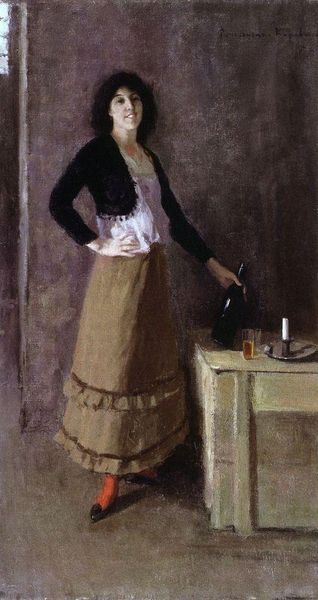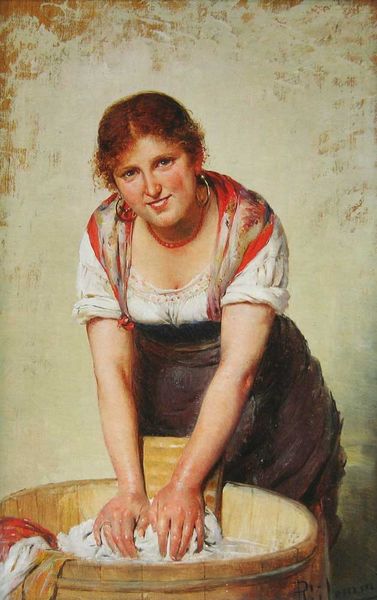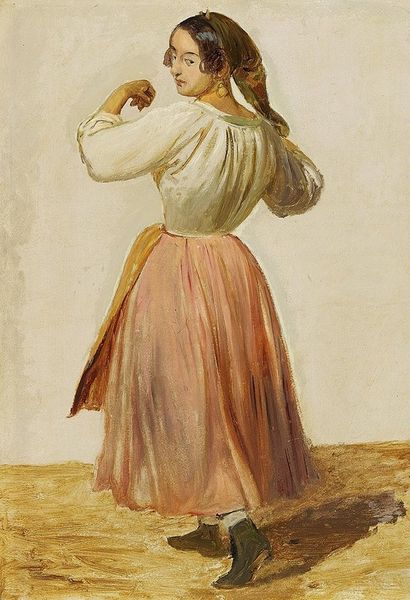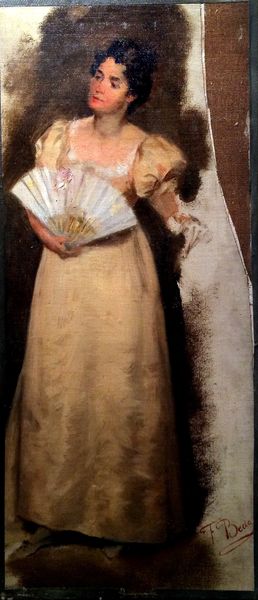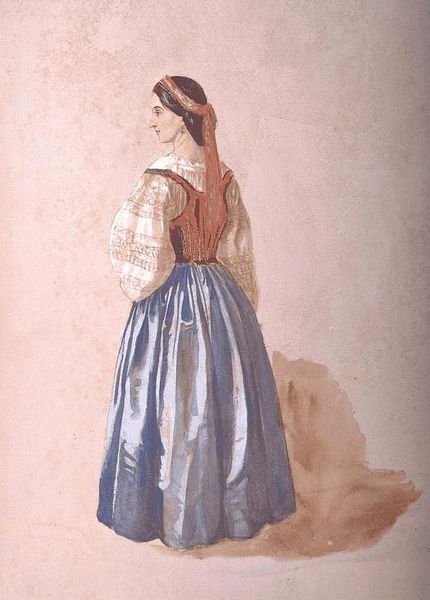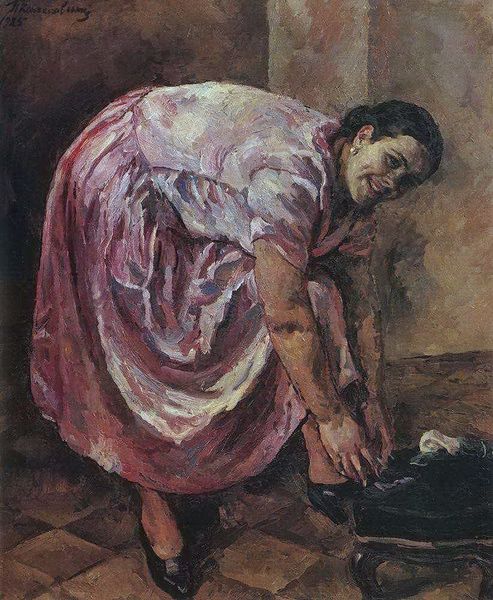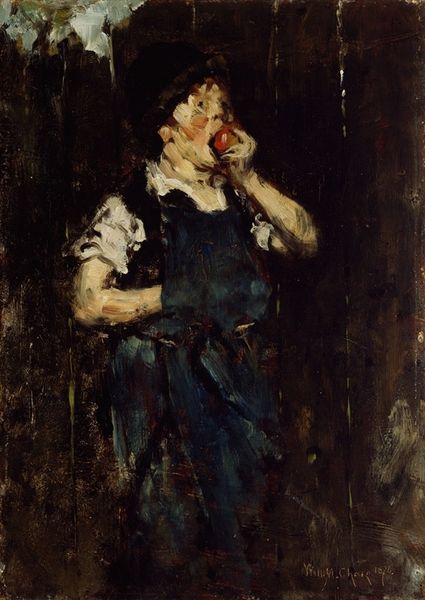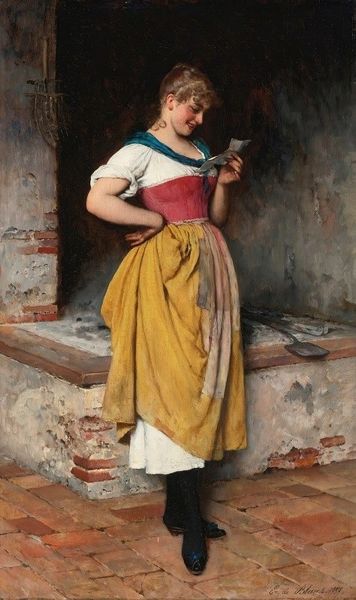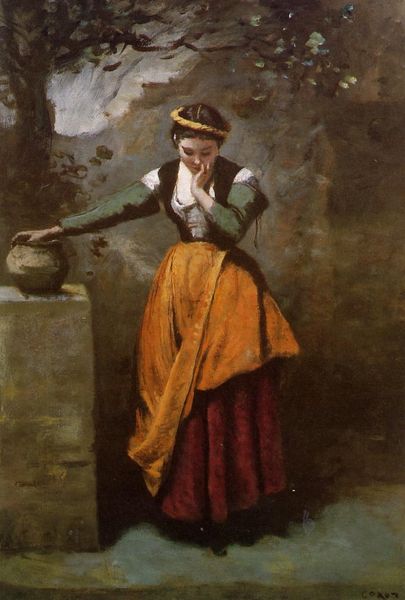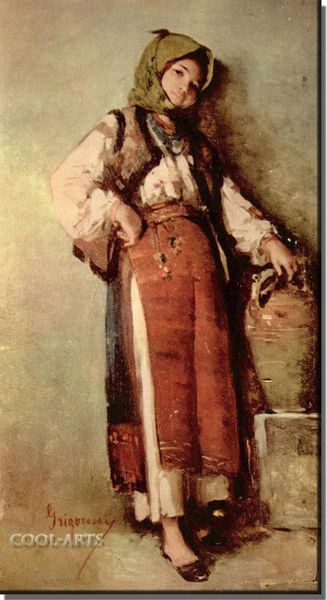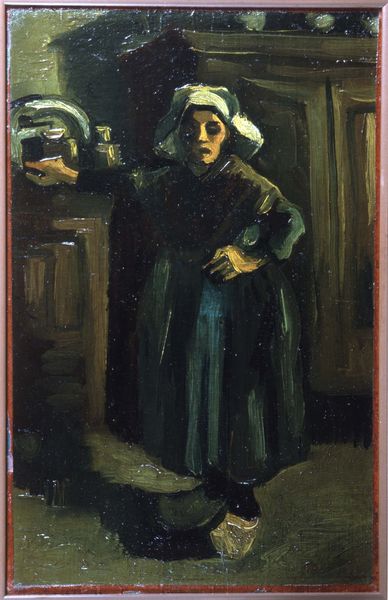
Young Italian Woman from Papigno with Her Spindle 1827
0:00
0:00
jeanbaptistecamillecorot
Private Collection
oil-paint
#
portrait
#
oil-paint
#
figuration
#
oil painting
#
romanticism
#
costume
#
genre-painting
#
italian-renaissance
Copyright: Public domain
Editor: Here we have Corot's "Young Italian Woman from Papigno with Her Spindle," painted in 1827 using oil paint. There’s a certain quietness to it, she’s leaning against a wall, very still, engaged in this very specific activity. What can you tell me about the historical background and Corot's choice of materials and technique here? Curator: Well, look at the materiality of that spindle. Corot has chosen to depict this young woman, not simply as an individual, but directly connected to her labour. This links her identity with the production of textiles. Editor: So, her social identity is defined by her means of production? Curator: Precisely! We see the reality of her existence through the very specific act of spinning. How does the simplicity of her garments - the visible weave of the cloth and rough textures - further inform this reading? Editor: It underscores her connection to the raw materials, the very fabrics of her life. There is nothing high society here, only labour and the act of creating fabric. Curator: And that informs our understanding of the painting. Corot elevates this 'genre painting' through careful depiction of labor itself. Do you notice the absence of overt Romantic drama, despite it being painted during that period? Editor: Now that you mention it, yes. It is more real. Less a commentary and more a document. Curator: Exactly! By depicting this young woman and the tools of her trade, he presents a nuanced view of labour, challenging traditional artistic subjects. What do you make of that? Editor: This connects the aesthetic of the painting to social history. Thanks to the materialist lens, the quotidian work is made central to how we perceive it, her activity taking on artistic meaning. Curator: I think you’ve got it! Looking closely at the how and why really adds to the 'what' of a painting.
Comments
No comments
Be the first to comment and join the conversation on the ultimate creative platform.
